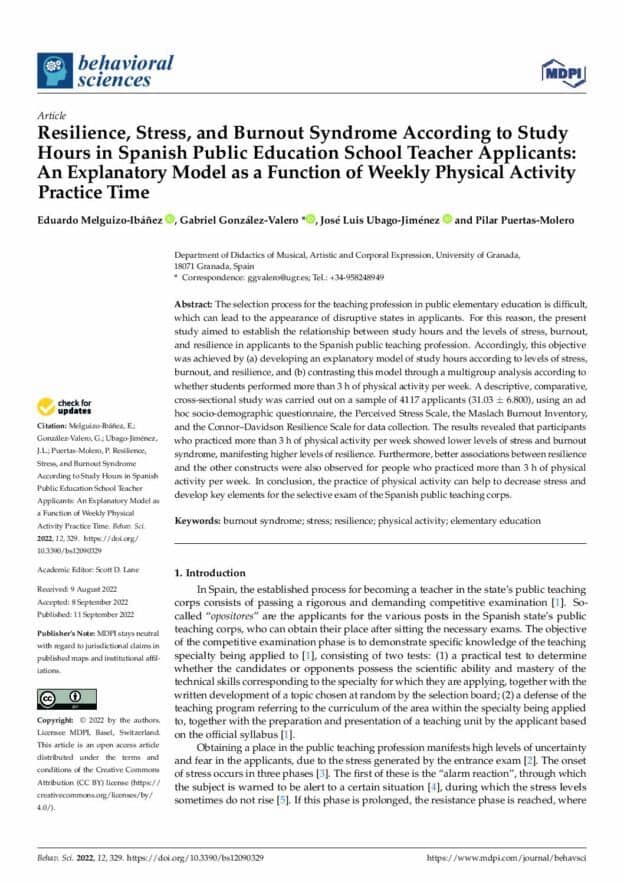Abstract
The selection process for the teaching profession in public elementary education is difficult, which can lead to the appearance of disruptive states in applicants. For this reason, the present study aimed to establish the relationship between study hours and the levels of stress, burnout, and resilience in applicants to the Spanish public teaching profession. Accordingly, this objective was achieved by (a) developing an explanatory model of study hours according to levels of stress, burnout, and resilience, and (b) contrasting this model through a multigroup analysis according to whether students performed more than 3 h of physical activity per week.
A descriptive, comparative, cross-sectional study was carried out on a sample of 4117 applicants (31.03 ± 6.800), using an ad hoc socio-demographic questionnaire, the Perceived Stress Scale, the Maslach Burnout Inventory, and the Connor–Davidson Resilience Scale for data collection. The results revealed that participants who practiced more than 3 h of physical activity per week showed lower levels of stress and burnout syndrome, manifesting higher levels of resilience. Furthermore, better associations between resilience and the other constructs were also observed for people who practiced more than 3 h of physical activity per week. In conclusion, the practice of physical activity can help to decrease stress and develop key elements for the selective exam of the Spanish public teaching corps.



Responses